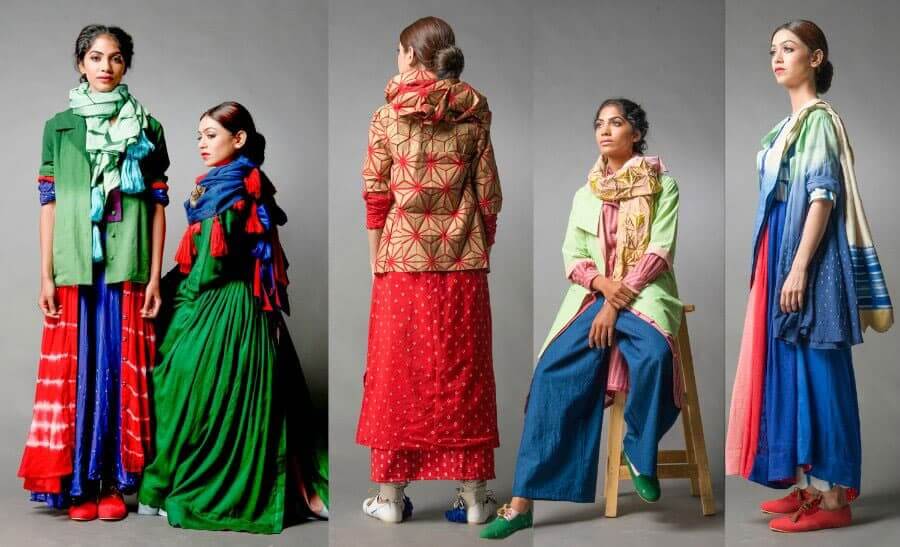In the wake of increased awareness about climate change and the detrimental effects of fast fashion on the environment, the concept of upcycling has been rapidly gaining popularity. Upcycling, a form of recycling, is the process of transforming old, unwanted items into new, usable pieces.
However, that doesn’t mean you have to compromise your commitment to sustainability when purchasing eyewear. There are several ways you can still incorporate eco-friendly practices: You can shop now for the best pairs to spice up your old wardrobe.
Understanding Upcycling in Fashion
Defining Upcycling
Upcycling involves taking used items or materials and creatively repurposing them to improve their value and aesthetic appeal. Unlike recycling, which often involves breaking down materials into their raw forms before reusing them, upcycling retains the original form to a great extent, embellishing or modifying it to create a product of higher quality or value than the original.
The Environmental Impact of Upcycling
Fast fashion has been identified as a significant contributor to environmental pollution due to its rapid production cycles and the vast amount of waste it generates. Upcycling is a powerful counter to this trend as it promotes sustainability by reducing waste, conserving resources, and minimizing the harmful impacts of production processes.
By transforming old clothes into fashionable pieces, you’re not only creating a unique style but also participating in a more sustainable and ethical fashion cycle.
Getting Started with Upcycling
Assessing Your Wardrobe
Before diving into upcycling, take a good look at your wardrobe. Identify items that you no longer wear but still love for their fabric, color, or print. These can serve as perfect candidates for upcycling. Do not overlook torn, stained, or outdated pieces. With a little creativity, even these can be transformed into fashionable garments.
Acquiring Necessary Skills and Tools
While upcycling might seem like a task for professional designers, basic sewing skills can often get you started. Learning how to sew buttons, make stitches, or repair minor tears can be a great beginning. Tools like sewing machines, threads, needles, and scissors are fundamental, and additional materials like buttons, zippers, patches, or fabric paint can be acquired as needed.
Ideas for Upcycling Your Old Clothing
Transforming T-shirts
Got a stack of old t-shirts that you can’t bear to part with? Transform them into trendy tank tops, tote bags, or even crop tops. T-shirts provide a great fabric base and require minimal sewing skills to modify.
Making the Most of Old Jeans
Jeans that don’t fit anymore can be turned into trendy shorts, or you can create stylish distressed jeans using a pair of scissors and a cheese grater. The leftover denim can be repurposed into patches for other clothes or even turned into small purses or pouches.
Working with Outdated Dresses and Skirts
With a bit more sewing skill, outdated dresses can be altered to reflect current trends. Long skirts can be shortened, and bulky dresses can be taken in to create a more flattering silhouette. Similarly, patterns or details from old dresses can be cut out and added to plain garments for a touch of flair.
Upcycling as a Fashion Statement
Upcycling allows you to create one-of-a-kind pieces that reflect your personal style. By upcycling, you’re not only reusing materials but also crafting unique clothing that you won’t find on any store rack. As a bonus, you’re taking an active role in promoting sustainability in fashion, which is a statement in itself.
Navigating Necessary Accessories: The Eyewear Challenge
While many items in your closet can be upcycled into something new, some essential accessories require a bit more careful consideration. Eyewear, for example, can be a challenging accessory to upcycle due to their specific, health-related functions and specialized construction.
However, that doesn’t mean you have to compromise your commitment to sustainability when purchasing eyewear. There are several ways you can still incorporate eco-friendly practices:
1. Choosing Sustainable Brands: One of the most effective ways to be eco-friendly is to buy eyeglasses from eco-conscious retailers. These retailers prioritize sustainability, often using recycled or biodegradable materials for their frames. In addition, these companies offer programs to recycle their products once they reach the end of their life and are also known to contribute to environmental causes.
2. Opting for Quality over Quantity: Invest in high-quality, durable eyewear that can last for many years. Though they may be more expensive initially, these glasses will last longer and reduce the frequency of replacement, leading to less waste.
3. Using Prescription Lenses: Instead of buying a new pair of glasses every time your prescription changes, consider replacing just the lenses. Some eyewear stores offer lens replacement services, allowing you to keep your frames and only change the lenses.
4. Participating in Take-Back Programs: Some eyewear companies offer take-back programs, where they recycle your old glasses when you’re ready to upgrade to a new pair. The materials are either reused in new glasses or otherwise properly disposed of, preventing them from ending up in a landfill.
Remember, being sustainable isn’t always about upcycling. It also involves making conscious choices about the products you buy, the companies you support, and the lifecycle of the items you use.
The Power and Potential of Upcycling
In the face of fast fashion and its negative environmental impacts, upcycling emerges as a responsible and creative alternative. By turning old clothing into fashionable pieces, we can combat waste, reduce our carbon footprint, and make a personal fashion statement.
So, delve into your wardrobe, arm yourself with a needle and thread, and let your creativity soar. The possibilities for upcycling are as endless as your imagination.

